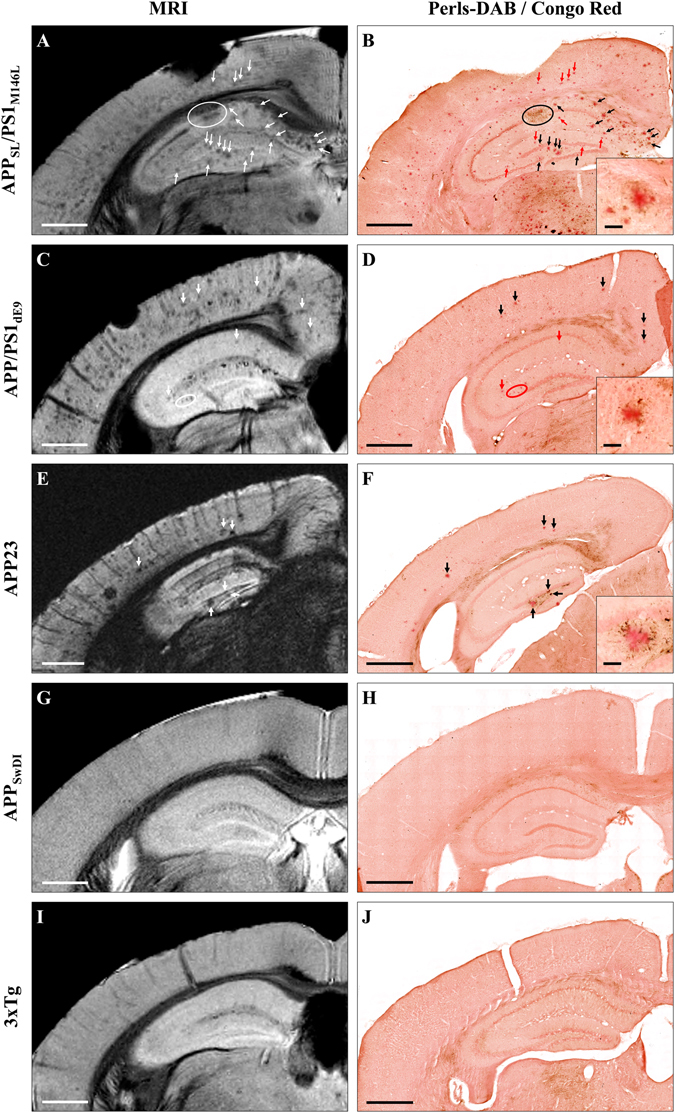Figure 4.

Comparison between detection of amyloid plaques by Gd-stained MRI and histological sections double-stained for amyloid and iron in five mouse strains. Gd-stained MR images (left) were registered with histological sections double-stained for β-amyloid (Congo red) and iron (Perls-DAB) (right) in APPSL/PS1M146L (A,B), APP/PS1dE9 (C,D), APP23 (E,F), APPSwDI (G,H) and 3xTg (I,J) mice. Hypointense spots (white arrows and circles) were visible in the MR images of APPSL/PS1M146L (A), APP/PS1dE9 (C) and APP23 (E) mice. They could be registered with congophilic amyloid plaques on histological sections (B,D,F, black and red arrows and circles). No congophilic plaques were detected in APPSwDI (H) and 3xTg (J) mice. Iron staining revealed iron deposits that co-localize with amyloid plaques (black arrows and circles) in APPSL/PS1M146L (B), APP/PS1dE9 (D) and APP23 (F) mice. Some other plaques were iron-free (red arrows and circles) and were also detectable by MRI indicating that iron is not necessary for their detection. No iron accumulation was observed in APPSwDI (H) and 3xTg (J) mice. Scale bars: 500 µm for main images and 50 µm for inserts.
